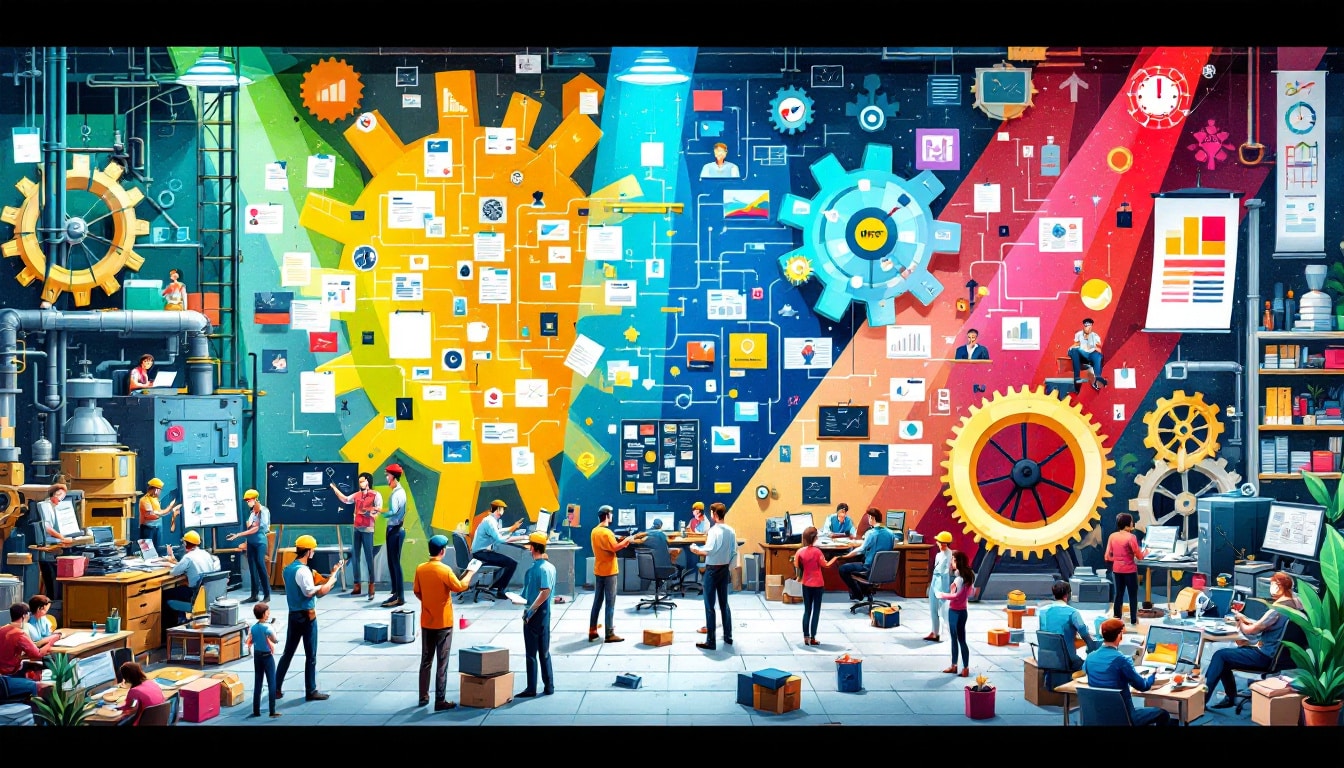The mind mapping is emerging as a transformative tool in optimizing personal productivity. By transcending traditional methods of organizing ideas, it offers a visual and dynamic approach that stimulates creativity and facilitates memorization. With its interconnected branches, each concept unfolds, illuminating the relationships between thoughts and allowing for a better understanding of information. Far from linear structures, this method encourages a richer and more interactive exploration of ideas, making task management smoother and more intuitive.
🔥 Nous recommandons Ideamap
Ideamap est l’outil idéal pour un brainstorming ou un projet collaboratif. Grâce son interface facile et à ses fonctions IA, Ideamap booste votre créativité tout en favorisant une meilleure organisation de vos idées pour atteindre vos objectifs.

In a world where information flows at a breakneck pace, the ability to organize one’s ideas and stay focused has become crucial. The mind mapping emerges as an innovative practice that revolutionizes the way we work and think. This visual tool allows for the conversion of complex ideas into simple and effective representations, thus fostering a significant increase in personal productivity.
Mind mapping is based on the idea that our brains are designed to process information in a non-linear manner. Through this technique, individuals can create a branching structure of ideas from a central thought, developing branches that represent sub-themes, examples, and related concepts. This graphical representation stimulates our creativity while facilitating the memorization of information. By visually organizing their thoughts, users can better grasp complex ideas and establish connections between different notions.
One of the main advantages of mind mapping is its ability to clarify ideas. By eliminating long task lists or dull paragraphs, it allows individuals to focus on what is essential. They can quickly identify priorities and key ideas that require their attention. This clarity promotes faster and more effective decision-making, as it becomes easier to compare different options and assess their implications.
Moreover, mind mapping is a collaborative tool. In a work environment, it encourages interaction and communication within teams. By using mind maps during brainstorming sessions, team members can easily share their ideas, build on each other’s contributions, and generate creative solutions in real time. This sharing of ideas facilitates a better collective understanding of the objectives to be achieved and strengthens team cohesion.
Mind mapping also aids in project planning. By integrating this method into their routine, an individual can clearly define the necessary steps to achieve their goals. Whether preparing a report, planning an event, or managing a complex project, a mind map allows for the visualization of different tasks, their deadlines, and associated responsibilities. This method thus avoids forgetfulness and reduces stress associated with poor organization.
Furthermore, mind mapping contributes to the development of analytical skills. By exploring various concepts and ideas in the same format, users learn to break down complex problems into more manageable elements. This promotes a better understanding of issues and enhances critical reasoning. By tackling problems in a more systematic manner, it becomes possible to find innovative and suitable solutions.
It is undeniable that mind mapping holds major importance in optimizing personal productivity. By integrating this visual technique into their daily routines, individuals often experience a resurgence of creative energy and renewed motivation. Transforming abstract ideas into concrete structures not only increases efficiency at work but also makes it an enjoyable and engaging practice. The impact of mind mapping is thus indicative of new organizational methods emerging in the digital age, offering innovative answers to contemporary productivity challenges.

FAQ on the impact of mind mapping on personal productivity
A: Mind mapping is a technique that allows for the visual representation of ideas and their connections. It starts with a central idea and expands into branches and sub-branches, thus facilitating comprehension and organization of information.
Q: How can mind mapping improve my personal productivity?
A: By using mind mapping, you can clarify your thoughts, organize your tasks logically, and stimulate your creativity. This visual method helps in memorizing information and managing your time more effectively.
Q: Is it difficult to learn how to create mind maps?
A: No, mind mapping is easy to learn. You can start with paper and a pencil or use specialized software. The principles are simple and accessible, allowing anyone to quickly get started.
Q: What tools can be used to create mind maps?
A: There are several tools, ranging from manual methods such as drawing on paper to software like XMind, MindNode, or online applications that facilitate the creation of mind maps.
Q: Is mind mapping suitable for all types of projects?
A: Yes, mind mapping is versatile and can be applied to various projects, whether for project management, note-taking during conferences, or brainstorming creative ideas.
Q: What are the benefits of mind mapping in terms of collaboration?
A: Mind mapping promotes collaboration by allowing multiple people to share ideas interactively. This enhances communication and facilitates understanding among team members.
Q: Can I use mind mapping for studies or revisions?
A: Absolutely! Mind mapping is often used by students to structure their studies, memorize complex information, and prepare presentations, which improves retention and comprehension of content.













